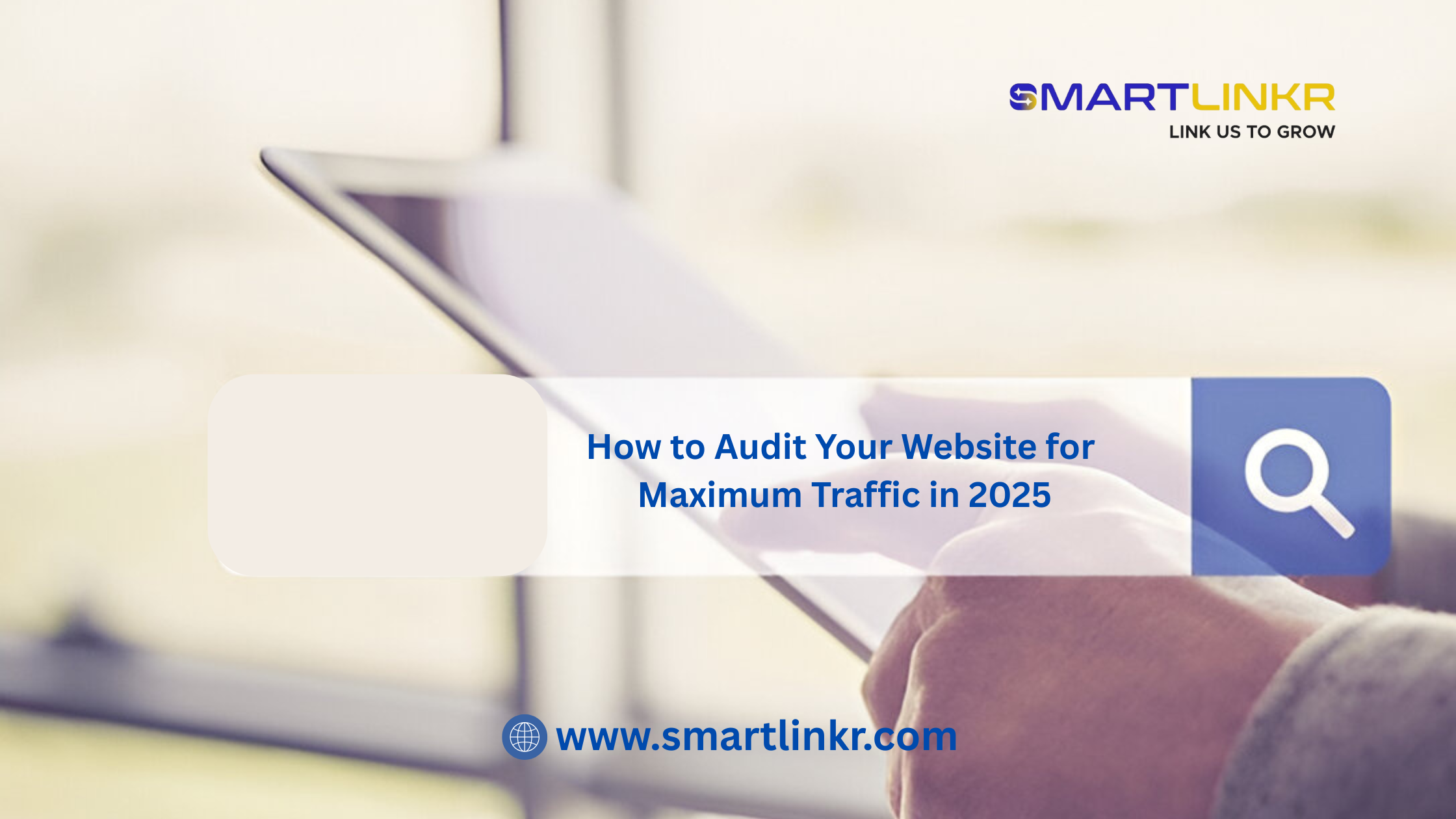0
+Satisfied Clients

In the ever-evolving digital world of 2025, having a website is not enough. What matters more is how well it performs. Whether you’re a startup, SME, or large enterprise, an effective website audit is your blueprint for higher search rankings, better user experience, and, ultimately, maximum traffic.
As Google’s algorithms continue to reward user-first experiences and clean site architecture, regular audits are no longer optional—they are essential. In this detailed guide from Smartlinkr’s blog, we’ll walk you through how to audit your website in 2025, using the latest tools, strategies, and performance indicators.
A website audit is a comprehensive analysis of all the factors that affect your website’s performance on search engines and user experience. It includes checking technical SEO, content quality, backlink profiles, site speed, mobile responsiveness, and more.
Think of it as a health check-up for your digital presence—uncovering issues and revealing optimization opportunities.
Let’s break down the audit into core components that help generate maximum traffic:
Why it matters: If your site has crawling, indexing, or structure issues, Google won’t rank it, no matter how good your content is.
Checklist:
Smartlinkr Tip: Always submit updated sitemaps to Google Search Console after major changes.
Why it matters: Proper on-page SEO ensures search engines can understand and rank your content accurately.
Checklist:
Smartlinkr Tip: Use SurferSEO or Clearscope to optimize your content based on SERP competitors.
Why it matters: Page speed and mobile performance are official ranking factors as of Google’s 2025 updates.
Checklist:
Smartlinkr Tip: Aim for LCP < 2.5s, FID < 100ms, and CLS < 0.1.
Why it matters: High-quality, relevant, and engaging content keeps users on your site longer—and Google notices.
Checklist:
Smartlinkr Tip: Use tools like Ahrefs Content Explorer or Semrush Content Audit to discover content gaps.
Why it matters: Over 70% of web traffic comes from mobile in 2025. A poor mobile UX can kill your rankings.
Checklist:
Smartlinkr Tip: Prioritize mobile load speed—use AMP if necessary.
Why it matters: Backlinks are still a top ranking factor in 2025. But quality matters more than quantity.
Checklist:
Smartlinkr Tip: Focus on EEAT (Experience, Expertise, Authoritativeness, Trustworthiness) in your content to attract natural backlinks.
Why it matters: High traffic is meaningless if your site can’t convert visitors into leads or customers.
Checklist:
Smartlinkr Tip: Integrate live chat and chatbot features to boost user engagement and reduce bounce rates.
Here are some of the most effective website audit tools:
The digital landscape is changing fast, but one rule remains: optimize or be invisible.
A regular, structured website audit for maximum traffic is not a luxury—it’s a necessity. From fixing technical glitches and improving page speed to optimizing content and backlinks, every element matters.
At Smartlinkr, we specialize in helping businesses like yours stay ahead in the SEO game. If you want a custom audit that brings real results, get in touch with our experts today!
Ideally, perform a full website audit every quarter. However, basic SEO checks should be done monthly to catch quick fixes.
While some checks (like mobile usability or title tags) can be done manually, tools like Screaming Frog or Ahrefs provide deep insights quickly and accurately.
Costs vary based on site size and depth of the audit. At Smartlinkr, we offer affordable packages tailored to your business goals.
Start with technical SEO (crawlability, indexing, errors) and Core Web Vitals, followed by content and backlinks.
Results can start showing in 4–8 weeks, depending on how fast issues are fixed and changes are implemented.